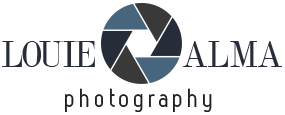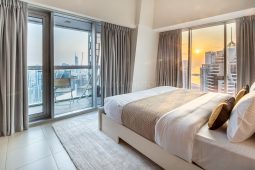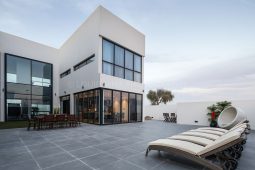Celebrity Cruising: A Luxurious Voyage at Sea
Mini cruises from the UK are very popular, and if you haven’t cruised before a great way to see what cruising is all about. My wife and I embarked on such a cruise from Southampton, visiting Zeebrugge (for Bruges) and then right into the heart of Amsterdam onboard Celebrity Apex.
The Celebrity Apex ship is one of the Celebrity Cruises’ Edge Series. It launched in 2020, and this 130,818-ton vessel accommodates approximately 2,910 passengers offering an elegant, high-end experience with cutting-edge design, diverse dining options, and superb entertainment. With its innovative spaces, including the Magic Carpet and Infinite Veranda staterooms, Celebrity Apex redefines the traditional cruise experience, blending contemporary luxury with a laid-back, sophisticated atmosphere.
Ship Design and Atmosphere
The ship boasts a sleek, modern aesthetic with a focus on open spaces, natural light, and great design. The ship interiors were designed by Kelly Hoppen, a renowned British designer known for her contemporary and inviting style. The neutral colour palette—blues, greys, and soft earth tones—gives the ship a boutique hotel feel. One of the most striking features is the Magic Carpet, a cantilevered platform that moves up and down the ship’s exterior, serving different purposes at different levels. It transforms into an al fresco dining area, a lounge, or an embarkation platform, depending on its position. This innovation not only adds to the ship’s futuristic look but also enhances the overall passenger experience.
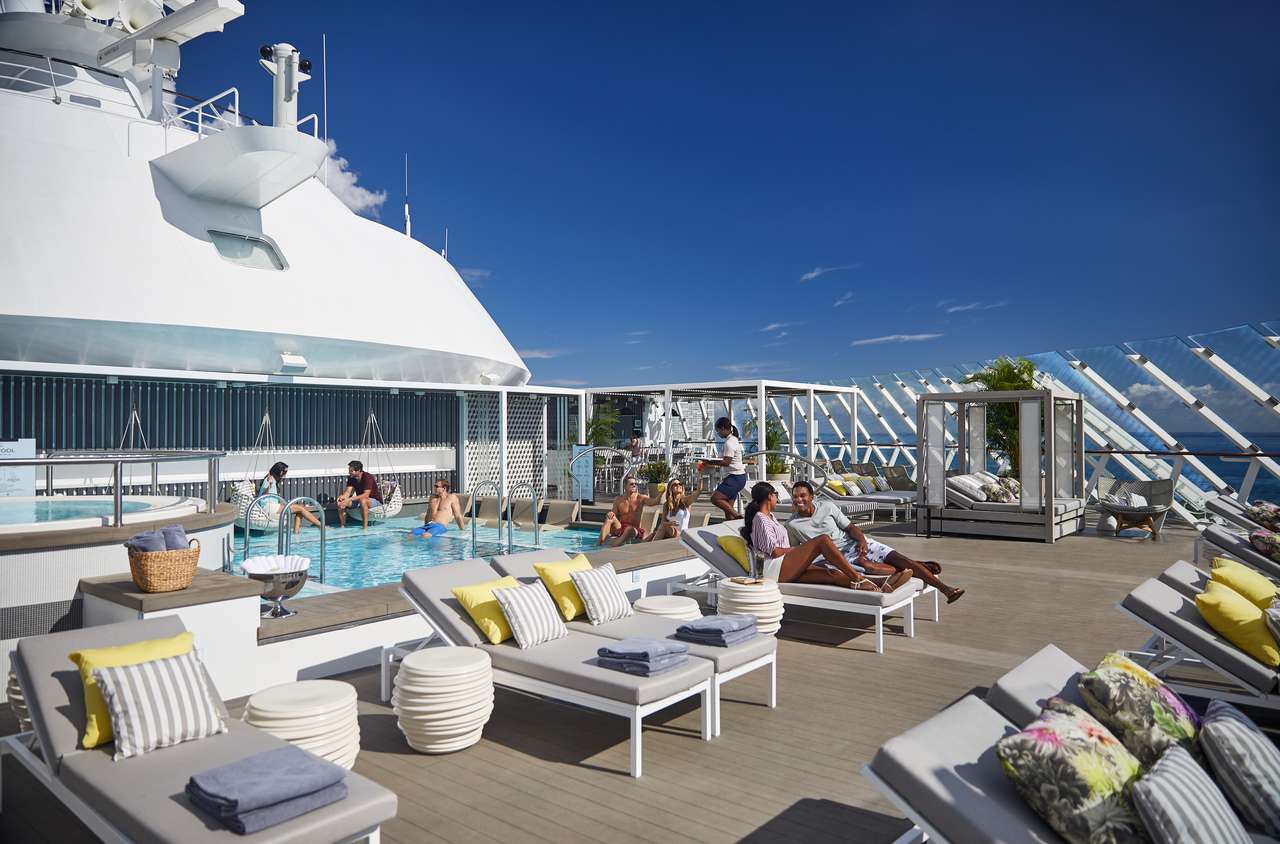
Retreat sundeck, Celebrity Apex
The Resort Deck, featuring the main pool, martini glass-shaped hot tubs, and a solarium, is a beautifully designed space with plenty of room. The Rooftop Garden, a lush, plant-filled retreat, was one of our favourite places to relax in the sun, perfect for enjoying cocktails!
The Infinite Veranda and Suites
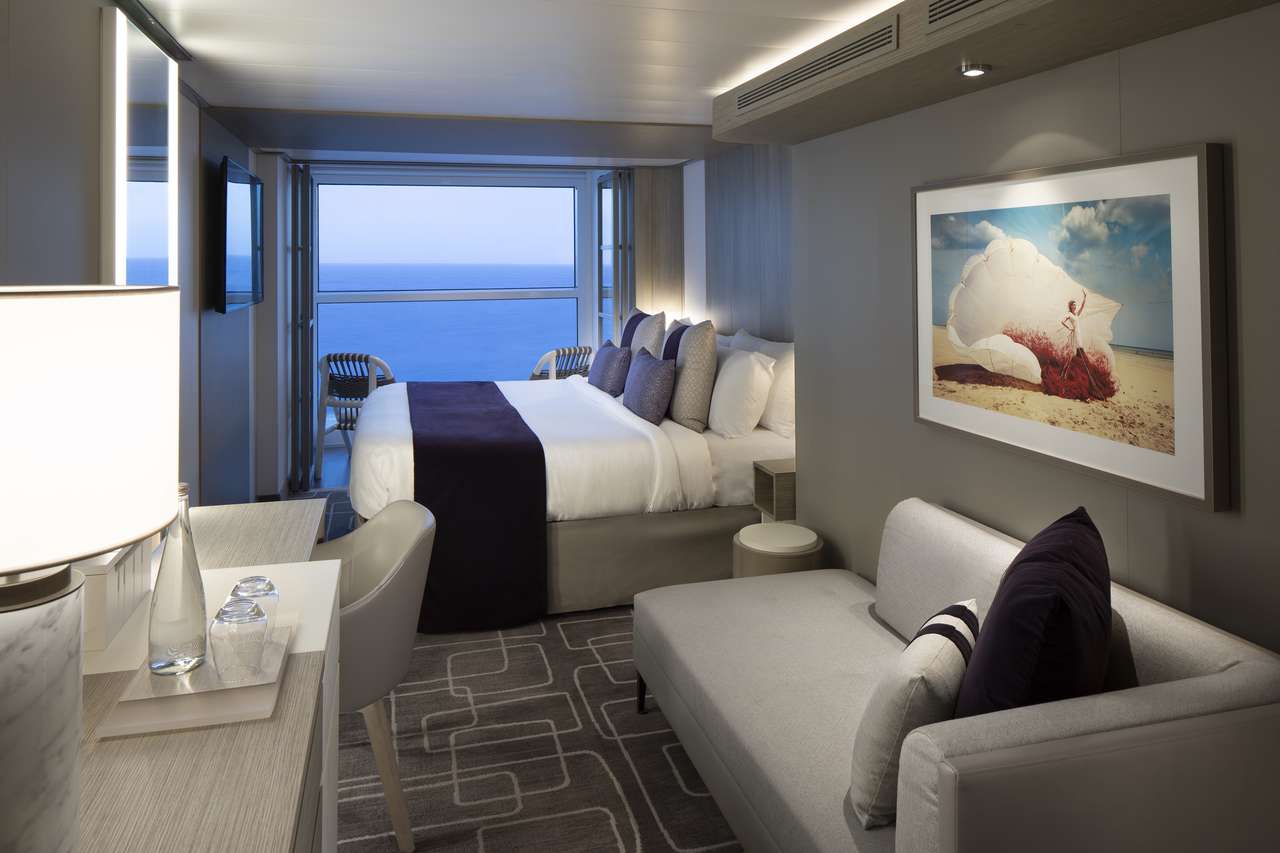
Stateroom with Infinite Veranda
Celebrity Apex’s accommodations set a new standard for cruise ship cabins. The most notable innovation is the Infinite Veranda staterooms, which replace traditional balconies with floor-to-ceiling glass doors that can be opened at the touch of a button, essentially merging the balcony with the cabin’s interior. This design creates more space and creates an indoor-outdoor experience, we loved it!
For those seeking a more exclusive experience, The Retreat offers suite guests a private, all-inclusive experience with personalised butler service, a private restaurant (Luminae), and a secluded sundeck.
Dining
Dining on Celebrity Apex is a cruise highlight, with 29 restaurants, bars, and lounges offering a wide selection of cuisine.
The ship features four complimentary main dining rooms—Normandie, Tuscan, Cosmopolitan, and Cyprus—each with a distinct theme and speciality dishes. Instead of a traditional single main dining room, this setup offers more variety and a restaurant-like atmosphere.
The Oceanview Café is the buffet area which provides a vast selection of food. Room service is also available 24/7
Specialty dining options include:
• Le Petit Chef – We experienced this one evening and found it really good fun. A whimsical, animated dining experience where a tiny chef “prepares” your meal before the actual dish is served and your table is turned into a 3D cinema screen where the little chef entertains throughout your meal
• Fine Cut Steakhouse – A classic steakhouse offering premium cuts
• Eden Restaurant – A multi-sensory dining experience in a botanical-inspired setting.
• Raw on 5 – A sushi and seafood restaurant with ocean views and a fresh raw bar selection.
• Le Grand Bistro – A charming French bistro serving classic Parisian fare.
Entertainment and Activities
Celebrity Apex offers a wide entertainment line-up,
• Theatre Shows – The state-of-the-art theatre at the front of the ship features productions and aerial acrobatics. Check out the daily newsletter for the shows and timings
• Eden – This is a multi-use venue offering intimate performances, and live music in a stunning garden-inspired setting.
• The Club – A versatile venue that hosts everything from silent discos and live bands to trivia and game shows.
• Casino – A modern Vegas-style casino with slot machines, blackjack, poker, and roulette.
The Spa offers an impressive range of treatments, including a seaweed wrap, cryotherapy facials, and a thermal suite with steam rooms and saunas. The Fitness Centre is fully equipped with Peloton bikes, yoga classes, and personal training options.
Verdict:
From my initial booking which I made over the phone to sailing onboard, Celebrity Apex offered a friendly and professional cruising experience. From restaurant waiters to housekeeping and concierge staff, we found the service exceptionally good. With its stunning design and unique accommodations to gourmet dining and high-tech entertainment, Apex offers a top of the range cruise experience. Whilst it may not be the best fit for families with young children, it is perfect for travellers looking for a sophisticated and relaxed voyage whilst discovering a great choice of worldwide destinations.
For more information visit www.CelebrityCruises.com
The post Celebrity Cruising: A Luxurious Voyage at Sea appeared first on The Travel Magazine.

